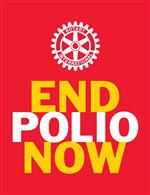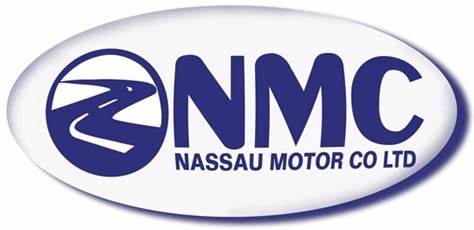The 'plus' in PolioPlus
Two billion children immunized. Five million spared disability. More than a million deaths averted. Rotary's flagship program is adding up to big gains in the battle against infectious diseases.
By Herbert A. Pigman
The Rotarian
July 2006
After an earthquake devastated northern Pakistan in October, polio eradication staff in the area immediately directed their efforts toward rescuing survivors and providing emergency care. In February, when health officials confirmed three cases of a deadly strain of avian influenza in poultry in Nigeria, the World Health Organization (WHO) responded with offers to help disseminate information and collect and transport diagnostic specimens . Such rapid responses wouldn't have been possible without the polio eradication infrastructure that the "plus" in PolioPlus has helped build.
Before launching an ambitious program in 1985 to protect all the world's children against the crippling disease of polio, Rotary's leadership deliberated at length over the initiative's name. "Polio" was chosen to signal Rotary's quest for a polio-free world, and "plus" was added to express Rotary's conviction that a focused attack on polio would also spur a dramatic increase in immunizations against the five other childhood vaccine-preventable diseases targeted by WHO's Expanded Programme on Immunization: measles, tuberculosis, diphtheria, whooping cough, and tetanus.
At the outset, some global health leaders questioned whether these dual program objectives could be achieved. They feared that any program focusing on a single disease would siphon public health resources from childhood diseases whose mortality and morbidity burden far outweighed that of polio. There was little evidence that disease-specific campaigns could leave sustainable public health infrastructures in their wake. These concerns, along with Rotary's total lack of experience in large-scale health programs, contributed to PolioPlus' cautious and lukewarm reception from many public health leaders.
Undaunted, Rotary poured volunteer effort and financial support into improving refrigeration facilities, transportation, communication, and social awareness of the value of immunization. Gradually, the salutary effects of Rotary's dual strategy began to emerge: By the late 1980s, immunization rates for diphtheria, tetanus, and whooping cough had increased dramatically.
Within two decades, the Global Polio Eradication Initiative achieved a 99 percent reduction in the number of polio cases worldwide. In the areas of disease control, social mobilization, political advocacy, vaccine delivery strategy, surveillance, and funding, the "plus" in PolioPlus is paying off.
Cold chain The need to protect the polio vaccine's potency in countries with minimal or no refrigeration capacity prompted the development of cold storage systems that are now used to preserve many other vaccines. An estimated one-third of sub-Saharan Africa's current cold chain capacity was implemented to support the polio program. Rotarians around the world supplied cold chain equipment through the PolioPlus Partners program, and Rotarians in polio-endemic countries now help monitor and maintain the systems.
"These cold chains are now being used to store vaccines needed to fight other infectious diseases, such as measles, tetanus, and diphtheria," says Marie-Irène Richmond-Ahoua, chair of the Côte-d'Ivoire PolioPlus Committee.
Surveillance A surveillance network comprising thousands of health clinics and outposts was developed to detect and report acute floppy paralysis, the sudden onset of paralysis that is the chief clinical indicator of polio. Today, this global reporting network, supported by 147 laboratories, serves as an early warning system to combat measles, neonatal tetanus, cholera, Ebola, avian flu, and other diseases.
"The measles mortality rate worldwide has been cut by more than 50 percent in the last six years," says Dr. Bruce Aylward, global coordinator of WHO's Global Polio Eradication Initiative. "That's half a million deaths a year averted because the measles [immunization] and surveillance network was able to take advantage of the polio eradication infrastructure."
Other tools developed for polio eradication surveillance are also being applied elsewhere. For example, health care workers used genetic sequencing methods developed to identify and locate the source of polioviruses to control the recent SARS outbreak in Asia.
The tugboat effect At the village level, PolioPlus has had a valuable "tugboat" effect on parents by leading them to seek medical attention for their children. Many of these parents had never visited a health care provider until they learned that a few drops of oral polio vaccine could protect their children from the dreaded disease. Along with the polio vaccine, children receive vaccines against other diseases, as well as life-saving vitamin A supplements, malaria bed nets, and information about nutrition and oral rehydration for the whole family.
Strategic planning Soon after the 1988 World Health Assembly resolution to eradicate polio, Rotary funded a core group of global and regional WHO leaders to provide technical leadership, an effort that resulted in the Global Polio Eradication Initiative, now spearheaded by WHO, Rotary, UNICEF, and the U.S. Centers for Disease Control and Prevention. Today, this partnership serves as a model of public-private sector cooperation, one that is being replicated for initiatives to control AIDS, malaria, measles, and tuberculosis.
To accelerate polio immunization progress, the initiative's planners turned to National Immunization Days as the only practical means of eradicating the disease. This strategy opened the door to massive participation by Rotarian volunteers, who also got involved in social mobilization, transport and communication, and political advocacy. Since 1985, Rotarians have invested millions of volunteer hours in PolioPlus.
Financial support By the time polio is eradicated, Rotarians will have contributed US$650 million to the effort through PolioPlus. Along the way, they have created an advocacy partnership that has raised more than $1.7 billion in polio-specific grants from donor nations. As awareness of the cost-effectiveness of immunization began to climb, other funding sources emerged: the Global Alliance for Vaccines and Immunization, the Bill & Melinda Gates Foundation, and the World Bank. When Rotary and the United Nations Foundation teamed up in 2000 to seek private-sector funds, they raised more than $100 million.
Lasting impact The "plus" in PolioPlus will continue its work long after polio is finally eradicated. With their hands-on involvement at all levels of the polio immunization program, Rotarians are building community trust in government-sponsored immunization programs. As a result, more countries are responding to public demands for national budgets to include funding for vaccines.
"The legacy of PolioPlus will go well beyond the eradication of one of the most devastating diseases known to mankind," Aylward says. "It will also leave behind stronger health systems in some of the poorest countries in the world, enabling them to tackle other important health threats, particularly in the area of immunizations and communicable disease."
Herbert A. Pigman is a past general secretary of Rotary International and a member of the International PolioPlus Committee.
This article is © 2005 Rotary International and is provided for the non-profit use of Rotarians worldwide; commercial use is prohibited. The article may be quoted, excerpted or used in its entirety, but the information should not be changed or modified in any way. Read more information in the RI copyright notice.
Download the website sponsorship guide









